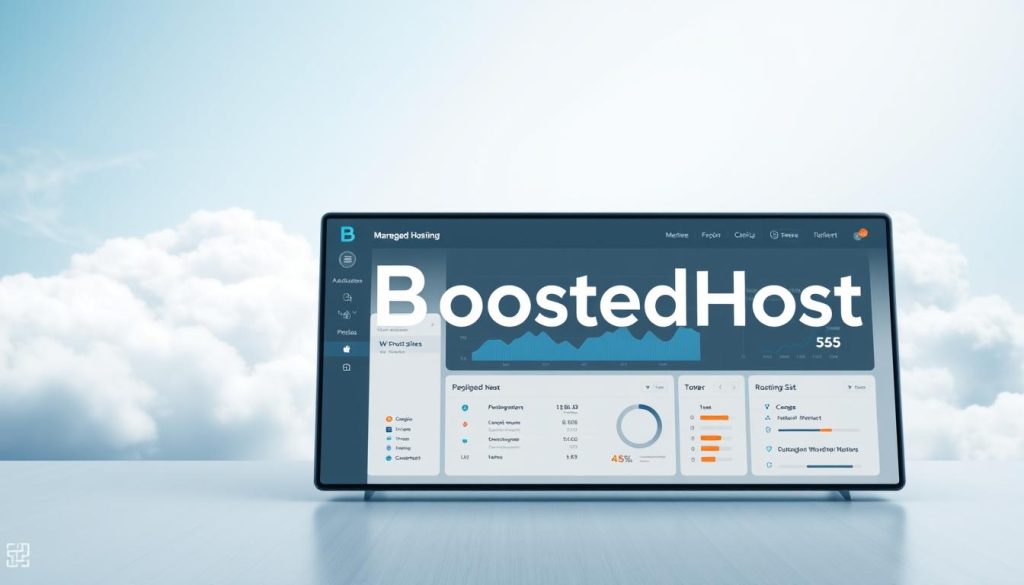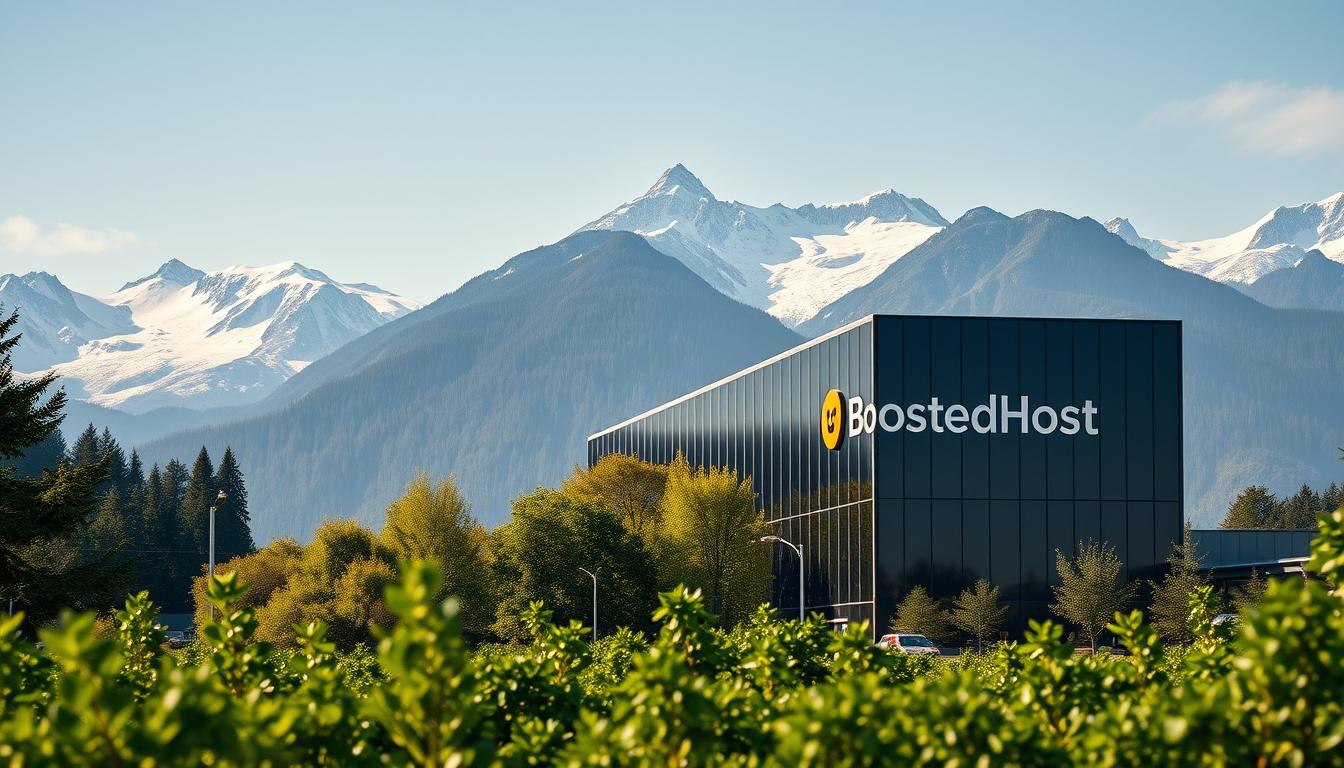Surprising fact: a typical intro rate of $2.99/month can jump to $17.99 at renewal, costing roughly $827 over five years and more than $1,900 over ten. That sticker shock changes how smart site owners pick hosting.
You’re here because you want a faster stack without the renewal hit. This guide maps real options you can trust for years, not just flashy first-year deals.
We compare entry promos vs renewals so you don’t get blindsided by prices later. You’ll see performance under real WordPress installs and uptime/load-time snapshots from >16,000 tests.
What matters: plans, long-term costs, support, staging, backups, and developer tools like SSH and WP-CLI. We flag limits on sites, storage, and visits so you know when to upgrade.
If you manage multiple sites, this piece shows which hosts save time and money as you grow. Expect practical picks for cheapest long-term, lowest first-year, managed WordPress, cloud-native, and eco-friendly options.
Key Takeaways
- Intro prices can be cheap, but renewal prices drive long-term spend.
- Compare real-world performance, not marketing claims.
- Look at support, staging, and developer tools before you commit.
- We break down plan math for 1/3/5/10 years to avoid surprises.
- Choose a host that fits your workflow if you manage multiple sites.
Why you’re hunting for a SiteGround alternative right now
Rising renewals and hidden limits are the top reasons people shop for a new host today. You saw a low promo and now face much higher prices. That math changes how you plan growth.
High renewal gotchas and long-term cost math
Example: a $2.99/month promo that renews at $17.99/month turns into hundreds extra over several years. Check 3/5/10-year totals before you commit.
Limits on space, visits, and developer access
If your plan caps storage or monthly traffic, growth gets throttled. Devs also hit walls when they lack root or automation access. That slows deployments and support for multiple users.
Modern cloud-native stacks vs shared hosting constraints
Shared accounts use fixed resources. Sites can slow during spikes. Cloud or container hosts offer auto-scaling and isolation, which gives steadier performance under load.
“Renewals and caps matter more than the first bill; plan the long term.”
| Issue | Shared hosting | Cloud/container |
|---|---|---|
| Renewal prices | Often higher after promo | Transparent tiered plans |
| Space & traffic caps | Fixed limits, overages | Auto-scale or larger quotas |
| Developer access | Limited (no root) | SSH, Git, CI/CD friendly |
- Do the multi-year math before you sign.
- Prioritize providers that let your site scale without a full rebuild.
Quick picks: best SiteGround alternatives by use case
Pick a host that matches how you actually run sites — not the flashy promo price. Below are smart, short recommendations so you can match needs to a budget and avoid nasty renewal surprises.
Cheapest long-term: Namecheap
Best for low five‑ to ten‑year totals. Namecheap is the standout if you care about multi-year math: about $178.64 over 5 years and $405.40 over 10.
Best short-term starter: Bluehost
Great for year-one ease: $1.99/month makes setup simple. Renewals jump higher, so plan migrations or upgrades.
Lowest first-year price: IONOS
IONOS’s $1/month promo gets you a $12 first year. It’s ideal if you’re looking cheap and can plan post-promo moves.
- Hostinger — lots of features on a budget (WP-CLI, SSH, scans).
- Kinsta / WP Engine — premium managed WordPress when performance matters.
- Cloudways — cloud flexibility on AWS/GCP/DO without heavy ops.
- Rocon — containerized, dev-first stack with auto-scaling.
- GreenGeeks — eco-friendly value with renewable credits.
“Match your traffic and growth to the plan so your next choice lasts.”
siteground alternatives 2025: the contenders you should actually consider
Picking a new host starts with real-world tests and stubborn price math, not marketing blurbs. We narrowed this shortlist using uptime and load-time data from 16,000+ tests plus multi-year cost projections versus SiteGround totals.
How we narrowed the list for 2025 performance and pricing
Focus: providers that either beat SiteGround on long-term pricing or deliver noticeably better performance at similar spend. We prioritized hosts with reliable support and developer tooling.
We ran WordPress installs, tracked uptime, and measured page TTFB under load. Then we compared entry promos to renewal rates and mapped 3/5/10-year plan costs so you see real lifecycle spend.
- Support and staging tools were gatekeepers.
- We included shared, managed, and cloud-native options.
- Each provider had to suit beginners, SMBs, or dev teams.
| Provider | Primary strength | Best for | Notable caveat |
|---|---|---|---|
| Namecheap | Low multi-year cost | Long-term budget sites | Modest performance at scale |
| Kinsta / WP Engine | High performance | Enterprise & traffic-heavy sites | Higher price |
| Cloudways / Rocon | Cloud flexibility | Developers and autoscale | More hands-on setup |
| Hostinger / IONOS / DreamHost / GreenGeeks | Value or eco-options | Small sites and eco-conscious users | Feature limits on low tiers |
Bottom line: this comparison used performance data, user signals, and plan math so you can pick the hosting option that matches your growth and budget.
Bluehost: cheaper than SiteGround with strong WordPress basics
If you want an easy WordPress setup that won’t blow your budget, Bluehost is worth a close look.
Pricing snapshot: you pay $1.99/month in year one (about $23.88), then expect renewals at $11.99/month. That adds up to roughly $178.20 at 3 years, $465.96 at 5 years, and $1,185.36 at 10 years — notable savings on multi‑year plan math.
Performance highlights and uptime data
Bluehost delivers solid baseline performance for US/EU audiences. Recent uptime hit 100% in May and July, and 99.96% in June.
Sample load times: West Coast 0.35s, East Coast 0.51s, London 0.55s — fast enough for small to mid‑size sites.
Key features you’ll use
- One-click WordPress and staging so you can test updates safely.
- SSH and WP‑CLI for power users and simple automation.
- Cloudflare CDN (Argo), static/object caching, WAF, and DDoS protection to keep pages snappy and secure.
- Managed updates, free malware scans, and weekly backups reduce maintenance time.
Best fit
Bluehost is ideal for first‑time users and small websites that value easy setup, a free domain for year one, and straightforward support. If your traffic grows, monitor storage and visit limits and plan an upgrade before you hit a ceiling.
“Bluehost balances low initial prices with practical features for beginner and small‑site workflows.”
Namecheap: the lowest long-term total cost
When you run the math for five or ten years, Namecheap often wins on pure savings. If your priority is keeping predictable hosting costs, this is the plan to study.
5–10 year savings vs SiteGround (real numbers)
Real totals: 3 years = $140.76, 5 years = $178.64, 10 years = $405.40.
That 5‑year number is roughly $649 cheaper than the typical competitor path. Over 10 years you keep about $1,501 in your budget versus higher prices.
Performance and uptime results for U.S. traffic
Namecheap posted a clean 100% uptime run for May–July. Load times were sub‑second in many regions: West USA 0.48s, Central USA 0.67s, East USA 0.80s.
In practice: you get steady performance for US users; using a CDN helps distant geos.
What you get: unmetered bandwidth, 20 GB storage, email included
The Stellar plan hosts three websites, offers unmetered bandwidth, and gives 20 GB of storage. You also get a free domain year one and lifetime domain privacy.
- First year: $1.98/month = $22.88 total.
- Email, backups, and a simple dashboard are included for day‑to‑day management.
- Good fit: small agencies or users who want predictable long‑term prices and basic support without surprise fees.
“If you want a set‑and‑forget budget plan that still performs for US traffic, Namecheap makes sense.”
| Metric | Namecheap Stellar | Notes |
|---|---|---|
| Websites | 3 | Good for small portfolios |
| Bandwidth | Unmetered | No surprise overage charges |
| Storage | 20 GB | Fits brochure sites and small stores |
| Uptime (May–Jul) | 100% | Stable recent times for US traffic |
Hostinger: budget-friendly managed WordPress features
Hostinger packs a lot of managed WordPress value into a very low entry price. You get practical tooling, clear performance data, and multi-year savings that add up fast.
Entry pricing vs long-term totals
First-year pricing is $2.69/month ($32.29 total), which matches many low promos. The real upside shows in multi-year math: 3 years = $196.46, 5 years = $261.05, and 10 years = $728.45 — noticeably cheaper over time.

Global load times and where it’s fastest
Uptime was near-perfect recently: 99.98%, 100%, 100% (May–Jul). European load times lead the pack (London ~0.35s, Paris ~0.39s). US regions are slower (~1.2–1.7s), so add a CDN for broader geos.
Tools you’ll use
- Developer access: WP‑CLI and SSH for fast maintenance.
- Managed features: auto core updates, vulnerability scanner, and staging-like workflows.
- Plan limits: 25 GB storage, up to 25 websites, ~25,000 visits/month on the entry tier.
- Integrations: one-click Google Search Console/Analytics and free domain year one.
“If most of your traffic is EU-based, Hostinger delivers great speed for the price.”
| Metric | Entry plan | Why it matters |
|---|---|---|
| Storage | 25 GB | Good for small portfolios |
| Websites | Up to 25 | Host multiple test sites |
| Monthly visits | ~25,000 | Plan upgrades if traffic spikes |
IONOS: the absolute cheapest first year
If you need the cheapest way to launch a site fast, IONOS puts a near‑free year on the table. That $1/month promo nets a $12 first year, which is ideal if you want to test an idea or build an MVP with minimal risk.
$1/month promo vs long-term plan math
The promo is tempting, but plan strategy matters. You can switch to the entry tier after year one or lock a 3‑year contract for predictable costs.
Quick totals: 3 years = $144, 5 years = $288, 10 years = $648. Those figures keep long-term prices low compared with many competitors.
What’s included: 25 GB SSD, SSL, daily backups, AI tools
You get 25 GB SSD storage, a free domain in year one, daily backups, SSL, and developer access (SSH/SFTP/WP‑CLI). Malware and vulnerability scans plus customizable caching add basic protection and steady performance.
- Best for: a single‑website launch or SMB with modest traffic.
- Example: launch a brochure site or MVP for pennies in year one, then upgrade or migrate once you validate traction.
- Note: uptime was solid in recent checks, but global load times average ~1.45–2.08s; add a CDN for wider audiences.
“If your top priority is the cheapest first year, IONOS wins—but plan the next move so you don’t get boxed in by entry limits.”
DreamHost: affordable and flexible with a generous refund window
DreamHost offers a straightforward value play if you want predictable bills and room to grow. Entry pricing is $2.95/month (about $35.40 year one), and the long-term math is compelling.
Cost over 3, 5, and 10 years vs SiteGround
Real totals: 3 years = $93.24, 5 years = $261, 10 years = $608.40. Those figures undercut many competitors and make DreamHost a clear budget alternative for long-term hosting.
Performance snapshot and support model
Uptime checks showed 99.77%, 99.99%, and 99.93% in recent months. Performance is steady rather than elite, which fits most small business needs.
Support is available via 24/7 tickets, with live chat during business hours. Expect fast ticket responses and business-hour chat for urgent fixes.
Why DreamPress matters for managed WordPress hosting
Features: unlimited traffic, 50 GB storage, one website, free domain year one, preinstalled WordPress, free migrations, auto updates, and automated daily backups.
“If you want a straightforward plan with strong long-term math and useful tools, DreamHost earns a close look.”
| Metric | Entry plan | Why it matters |
|---|---|---|
| Price (3/5/10 yrs) | $93.24 / $261 / $608.40 | Predictable long-term prices |
| Storage | 50 GB | Enough for serious small sites |
| Support | 24/7 tickets + live chat | Reliable help when you need it |
- DreamPress adds higher performance and managed guardrails as your site grows.
- Preinstalled tools and SFTP/SSH/WP‑CLI give you control when you need it.
Premium managed and cloud-native picks when performance is non‑negotiable
For mission‑critical sites, you want predictable behavior under load and tooling that speeds deployments. These hosts trade bargain promos for consistent performance, developer access, and enterprise protection.
Kinsta — Google Cloud infrastructure and low TTFB
Kinsta runs on google cloud infrastructure, giving you low TTFB and 24+ data centers for global reach.
Expect enterprise stability and proven 99.99% uptime in high‑demand tests. This is a top pick when multi‑region performance matters.
WP Engine — opinionated managed WordPress with caching
WP Engine focuses on managed wordpress with proprietary caching, daily backups, and real‑time threat detection.
It adds guardrails that improve reliability but may restrict some plugins—plan builds around supported tools.
Cloudways — cloud providers without heavy ops
Cloudways layers managed hosting on AWS, GCP, or DigitalOcean with easy vertical scaling and hourly billing.
There’s a short free trial and simple controls, so you get cloud flexibility without deep ops work.
Rocon — containerized, CI‑friendly hosting for fast teams
Rocon uses container isolation and auto‑scaling to cut noisy‑neighbor issues. Agencies report ~60% faster pages and much less DevOps overhead.
Full SSH/WP‑CLI/Git/API access, one‑click staging/rollbacks, DDoS protection, and auto‑patching speed deployments for your team.
- When to pick these options: if traffic spikes, revenue depends on speed, or your team needs CI pipelines.
- They prioritize performance, protection, and developer tools and access so you spend less time firefighting.
- Pricing models vary (monthly, hourly, usage), so match the option to your forecasting and growth plans.
“Choose premium hosting when every millisecond and percent of uptime affects your bottom line.”
Performance, tools, and dev workflows: how these hosts differ from SiteGround
Your dev choices shape real outcomes. Cheap promos hide differences in caching, isolation, and automation that affect daily work. Look past price and check how each provider treats performance and recovery.
Load times, uptime, and caching stacks
Load times vary by stack: Bluehost and Namecheap showed sub‑0.6s and 0.48s regional loads in our checks. Hostinger led EU speeds near 0.35s, while IONOS had slower global loads.
Caching layers and isolation reduce noisy‑neighbor slowdowns. Cloud-native and container hosts use aggressive caching plus dedicated resources to keep your pages fast.
Staging, backups, and restores: beyond the basics
Staging that clones production cuts release risk. Automated backups with offsite retention and one‑click restores matter for revenue sites. Verify frequency and retention before you commit.
SSH, WP‑CLI, Git, and API access for automation
Developer access—SSH, WP‑CLI, Git, and APIs—lets you script maintenance and wire CI/CD. If you manage multiple sites, role‑based dashboards and templates save hours.
Auto‑scaling vs fixed shared resources
Auto‑scaling handles sudden load spikes in minutes. Fixed shared plans can throttle your site under peak load. Match the provider to your traffic profile and tooling needs.
“Tools that automate updates, scans, and cache management cut toil and improve user experience.”
Pricing and plans comparison: entry promos vs renewals and real total cost
Don’t judge a hosting plan by its promo — look at how prices evolve over time.
Entry rates are useful, but the real question is what you pay at 3, 5, and 10 years.
Short-term vs multi-year spend
One-year offers can be tiny: examples include Bluehost ($23.88), Namecheap ($22.88), IONOS ($12), Hostinger ($32.29), and DreamHost ($35.40).
Multi-year math tells a different story. SiteGround’s renewals push totals near $827 at five years and above $1,900 at ten years. By contrast, Namecheap, DreamHost, and IONOS keep long-term bills far lower.
Storage, traffic caps, and add-ons that change ROI
Storage and visit limits matter. A plan that looks cheaper can add costs for extra storage, CDN, or email.
Per-website pricing is also crucial if you host several sites. That can make an entry tier more or less cost-effective for agencies.
“Always model 3/5/10-year totals — promos rarely tell the whole cost story.”
| Provider | 1-year | 5-year | 10-year |
|---|---|---|---|
| Namecheap | $22.88 | $178.64 | $405.40 |
| Hostinger | $32.29 | $261.05 | $728.45 |
| DreamHost | $35.40 | $261.00 | $608.40 |
| IONOS | $12.00 | $288.00 | $648.00 |
| Bluehost | $23.88 | $465.96 | $1,185.36 |
| SiteGround benchmark | — | $827.00 | $1,900.00+ |
- Key tip: separate promos from renewals when you compare plans and prices.
- Hourly billing or container scaling can trim costs for bursty traffic and change when you pay.
- Factor in storage, CDN, email, and domain privacy — they swing ROI as much as sticker prices.
How we test and choose: methodology that favors real-world WordPress performance
Our methodology focuses on how hosting performs for live WordPress sites, day after day. We build real installs, run continuous checks, and measure how pages behave across regions. This keeps results tied to actual user experience rather than marketing claims.

Always-on monitoring of load times and uptime
We run 16,000+ performance tests and monitor uptime from multiple locations. That gives reliable page and server metrics over many times and traffic patterns.
Continuous checks prevent one-off spikes from skewing conclusions. We log TTFB, full page loads, and regional variance so you see realistic performance across geographies.
User survey signals and editorial testing environments
Lab data is paired with user surveys so you know how real people feel about support and speed. Our editorial team deploys controlled WordPress sites per host to validate claims.
That mix of feedback shows how provider tools and workflows affect your day‑to‑day operations.
Accounting for hidden fees, limits, and support quality
We verify plan limits—storage, visits, CPU/RAM—and fold hidden fees into multi‑year totals. Support is tested across chat, tickets, and phone to time real issue resolution.
“We model costs and tests the way you actually pay and the way your users actually browse.”
| What we test | Why it matters | Example metric |
|---|---|---|
| Uptime & load times | Stability and speed | TTFB, full load |
| Support & user feedback | Recovery and trust | Response time, survey score |
| Costs & limits | Real total cost | Renewals, hidden fees |
We compare providers under the same baseline so results are fair. This is the most practical way we know to recommend wordpress hosting that delivers the performance and experience your site needs.
Conclusion
The right hosting decision balances price, performance, and dependable support. Review the picks above and match them to your growth plan: Namecheap for lowest long‑term cost, Bluehost or IONOS for a smooth first year, and Kinsta or WP Engine when managed WordPress performance matters.
Quick choice tips: if you’re ’re looking cheaper without sacrificing reliability, model 3/5/10‑year totals. Hostinger and DreamHost give strong feature sets for growing sites, while Cloudways or Rocon suit cloud‑native workflows.
Shortlist two to three providers, trial a plan, and pick the one that keeps your website fast, your team productive, and your total cost sane. These are the best siteground alternatives to guide that final choice.
FAQ
Why should I consider a different host if my current plan has good uptime?
Good uptime is only one piece. You should look at renewals, storage limits, traffic allowances, and developer access like SSH or Git. A host that starts cheap can become costly over time, and some shared stacks throttle CPU or visits during traffic spikes, which hurts real-world performance.
How do renewal rates affect long-term cost?
Intro promos often mask the real expense. Renewal rates can be two to four times the first‑year price. Calculate 3–5 year totals including typical add-ons — backups, staging, and SSL renewals — to see true cost per month and avoid surprise bills.
What hosting features matter for WordPress speed?
Look for server-level caching, a modern PHP version, HTTP/2 or HTTP/3 support, SSD storage, and a CDN option. Managed hosts may add object caching and optimized stacks that improve TTFB and page load times compared to standard shared hosting.
Is managed WordPress hosting worth it for a small blog?
If you want automatic updates, daily backups, and hands-off caching with better support, managed plans can save time and headaches. For very small personal blogs, a cheap shared plan can work, but managed hosting pays off if you value speed, security, and time savings.
How do cloud-based hosts differ from traditional shared hosts?
Cloud hosts use scalable resources across multiple machines so your site can handle traffic spikes better. They often let you choose providers like Google Cloud or AWS, and offer tools for horizontal scaling, while shared hosts limit you to fixed CPU and memory pools.
What should I check about backups and staging?
Confirm backup frequency, retention length, and one-click restores. Staging environments should be easy to create and push to production without manual DB merges. These are essential for safe updates and testing new features.
Do cheaper hosts compromise on support quality?
Not always, but support depth varies. Budget hosts may offer chat-based help with limited WordPress expertise, while premium managed providers include specialized WordPress teams and faster response SLAs. Check real-user reviews and average response times.
Will switching hosts affect my SEO or rankings?
If migration is handled properly — preserving URLs, using 301 redirects where needed, and minimizing downtime — SEO impact is minimal. Faster load times and better uptime can actually improve rankings over time.
How can I measure which host gives the fastest load times for my audience?
Test TTFB and full page load from locations where your users live using tools like WebPageTest and real user monitoring. Compare caches, CDN presence, and server locations; a host with local data centers will often be faster for regional traffic.
Are eco-friendly hosts slower or more expensive?
Not necessarily. Green hosts like GreenGeeks offset energy use but can still offer competitive performance and pricing. Evaluate specs — CPU, storage type, CDN options — rather than assuming eco equals slow or costly.
What dev tools should a modern WordPress host provide?
Look for SSH, WP-CLI, Git deployment, staging environments, and API access for automation. Containerized or CI-friendly platforms add value if you use continuous deployment or need isolated build environments.
Is container-based WordPress hosting overkill for small sites?
It can be, but it offers predictable performance and easy scaling. If you expect growth, frequent deployments, or use advanced developer workflows, container hosting gives better isolation and performance consistency.
How do I compare storage and bandwidth limits between plans?
Read the fine print: some plans advertise “unmetered” bandwidth but have CPU or IO limits that throttle heavy traffic. Check allotted SSD space, inode limits, and any visit caps that trigger upgrades or throttling.
Can I move a WordPress site myself, and what’s the risk?
You can migrate using plugins or manual export/import, but risks include broken links, plugin conflicts, and downtime. Many hosts offer free or paid migrations that reduce risk and ensure DNS, SSL, and email stay intact.
Which hosts offer the best value for growth and high traffic?
For scalable performance look at managed cloud providers that run on Google Cloud or AWS, and platforms with auto-scaling or dedicated resources. Those options cost more but reduce outage risk during traffic surges and simplify scaling.




